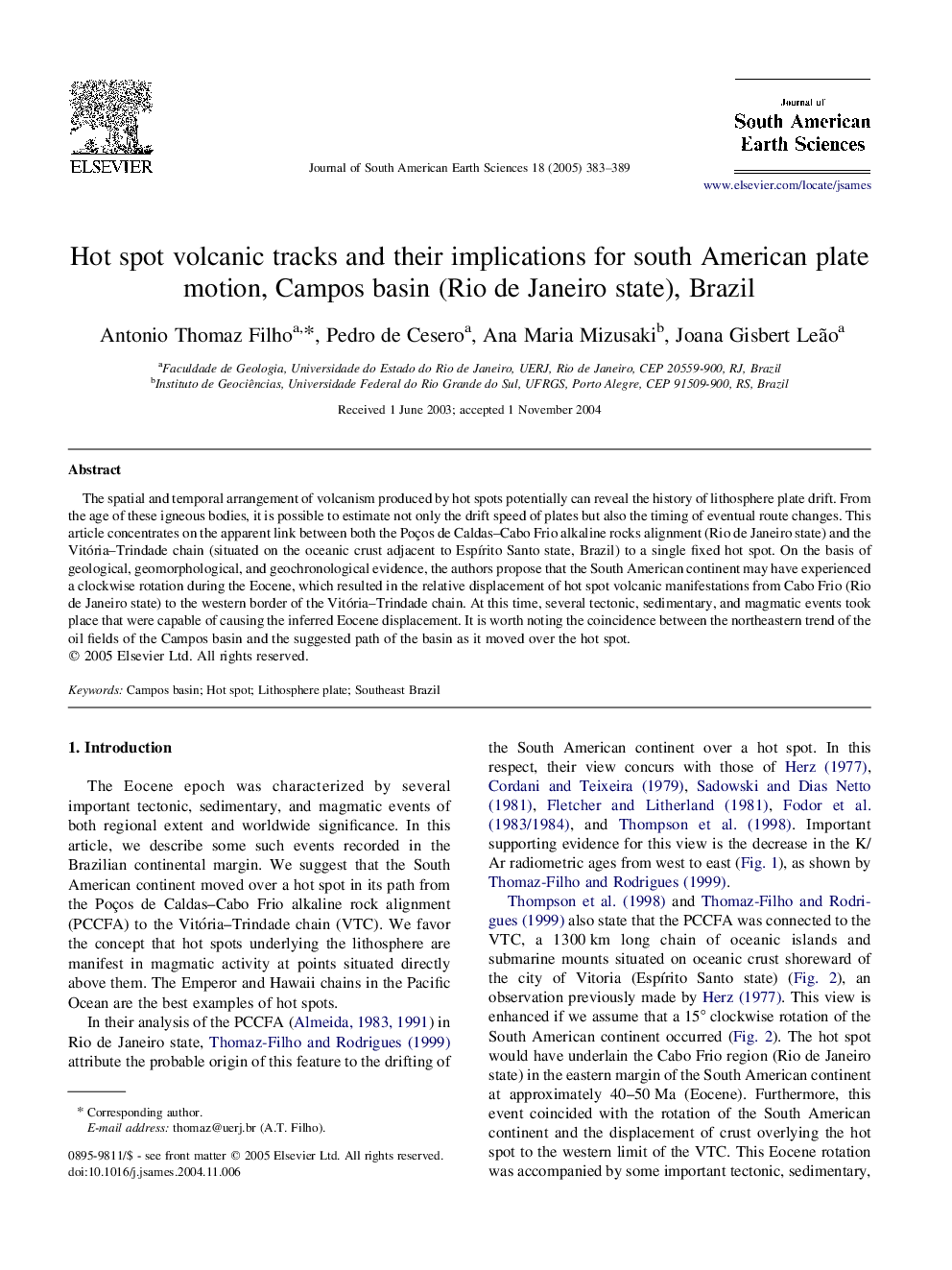| Article ID | Journal | Published Year | Pages | File Type |
|---|---|---|---|---|
| 9524463 | Journal of South American Earth Sciences | 2005 | 7 Pages |
Abstract
The spatial and temporal arrangement of volcanism produced by hot spots potentially can reveal the history of lithosphere plate drift. From the age of these igneous bodies, it is possible to estimate not only the drift speed of plates but also the timing of eventual route changes. This article concentrates on the apparent link between both the Poços de Caldas-Cabo Frio alkaline rocks alignment (Rio de Janeiro state) and the Vitória-Trindade chain (situated on the oceanic crust adjacent to EspÃrito Santo state, Brazil) to a single fixed hot spot. On the basis of geological, geomorphological, and geochronological evidence, the authors propose that the South American continent may have experienced a clockwise rotation during the Eocene, which resulted in the relative displacement of hot spot volcanic manifestations from Cabo Frio (Rio de Janeiro state) to the western border of the Vitória-Trindade chain. At this time, several tectonic, sedimentary, and magmatic events took place that were capable of causing the inferred Eocene displacement. It is worth noting the coincidence between the northeastern trend of the oil fields of the Campos basin and the suggested path of the basin as it moved over the hot spot.
Keywords
Related Topics
Physical Sciences and Engineering
Earth and Planetary Sciences
Earth and Planetary Sciences (General)
Authors
Antonio Thomaz Filho, Pedro de Cesero, Ana Maria Mizusaki, Joana Gisbert Leão,
